Green, white, red, black, … How to understand the colours of the Roman Catholic liturgy?
Who has never wondered, during the liturgy, what made the priests and their assistants wear different colours throughout the year ? Green, white, red, black, violet, pink and even blue and yellow sometimes, the Catholic liturgy uses several colours depending on the celebrations which could leave more than one person unaware of these codes perplexed.
What are the colours? What are their meanings? When are they used ? All this is the subject of this article which aims to offer a short introduction to these ”rainbow” of garments of the Catholic liturgy.
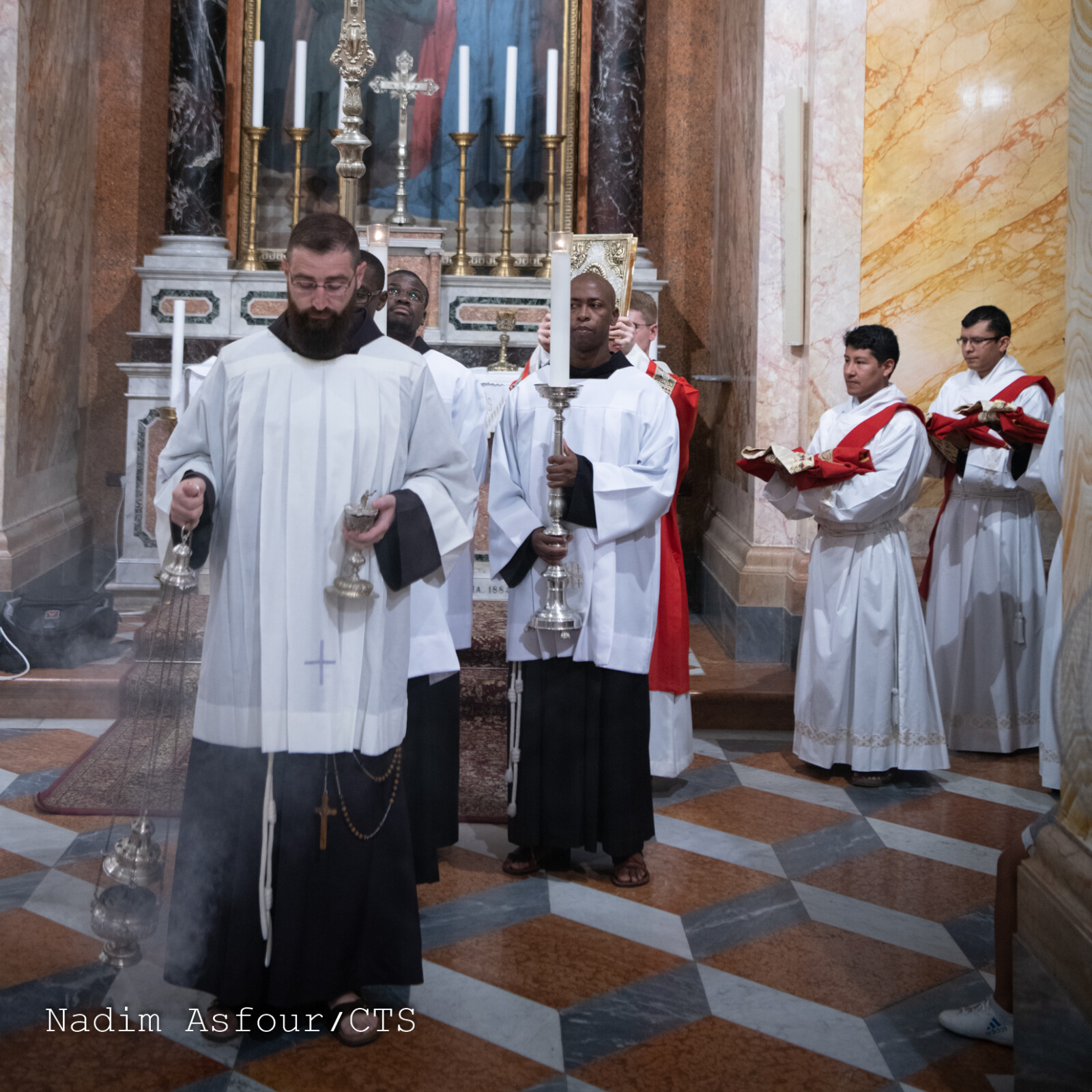
Before going into the heart of the subject, it is worth specifying that most of the liturgical customs were not fixed from the start of Christianity, but developed gradually over the centuries. The colour, in particular, does not escape this rule and today we are not sure of the garment codes of the paleo-Christian period (in other words, the earliest times of Christianity, until its official adoption by Constantine in 313)[1].
“In the beginning, the garments of the Church were not that different from those of the people”, says Alan Schreck, American professor of theology [2]. In any case, it seems that white made its appearance from the 4th century and was used until the 9th century for the liturgy of the ordinary time [3].
Over the centuries, several other colours appeared, without there being any global harmonization by the Church. We have to wait until the end of the 12th century for an attempt at standardization that uses in all the parishes to be undertaken, on the initiative of the future Pope Innocent, De sacro altaris mysterio, which effectively defines a first rule of liturgical colours made up of white, green, red and black. Violet is added, perceived as a variation of black in its symbolism of penitence, allowed on the fourth Sunday of Lent (Laetare). [4]
“He explained the choice of each of the colours with a spiritual and symbolic meaning to a corresponding day or time of the liturgical calendar. […] The Pope’s codex began to circulate, and then the Rationale divinorum officiorum by Guglielmo Durando (1230-1296), bishop of de Mende, stimulated the process, leading to a more widescale adherence to the guidelines within the fourteenth century. Durando considered white, red, black and green the fundamental colours, while also describing the use of purple/violet and golden yellow within the Roman church. […] Nevertheless, the process of standardisation was slow, since in practice interest was focused more on the quality of the vestments and in the colours linked to tradition.
In 1570, the Ordo Missae promulgated by Pius V supplied the Church with an ecumenical instrument of liturgical unity. [5] The prescribed colours were those indicated by Innocent III, but in certain cases other colours that has been traditionally used at length were permitted [this is how blue came to be the liturgical privilege (author’s note)], and pink and purple were considered as different shades of the same colour”. [6]
What is the situation today?
If the Novus Ordo Missae of 1969 by ope Paul VI made deep change in the Roman Catholic liturgy, this reform did not deal very much with the question of the liturgical colours. This way, usage today remains very close to the reform of St Pius V, which itself consecrated a tradition several centuries old. Apart from a few variations, we can say that the use of the colours of the vestments in the liturgy has stayed similar in Roman Christian history, for at least one thousand years.
Official liturgical colours :

Green
The colour of what is called “ordinary” (in the meaning of habitual, familiar) time, it is used twice in the liturgical calendar: between the Baptism of Christ (the first Sunday following Epiphany, 6 January) and Ash Wednesday (marking the start of Lent, 47 days before Easter), then between Pentecost (the seventh Sunday after Easter) and Advent (the four weeks preceding Christmas).
Green is linked to nature and the renewal of vegetation, it symbolizes hope in the Resurrection, the foundation of Christian faith.
Red
The colour of fire and blood, red is the symbol of Love, Charity, sacrifice and martyrdom.
It is used during Holy Week for Palm Sunday and Good Friday, the day on Pentecost, on the celebration of the Precious Blood, for the feast-days of the apostles and martyred saints, for the feast-days linked to the holy relics and lastly, during the celebrations of the Invention and the Exaltation of the Holy Cross. It may also be used for the mass of the sacrament of the Confirmation, if the day does not coincide with another feast-day.


White
White is the colour of light, purity, glory and joy.
It is used for all the celebration linked to Christ, except that of the Passion (for Christmas and Easter in particular), for the feast-days of the Virgin Mary, of the angels and of the non-martyred saints and lastly, for the birth of St John the Baptist. It is also the colour used to administer the sacraments of baptism and marriage.
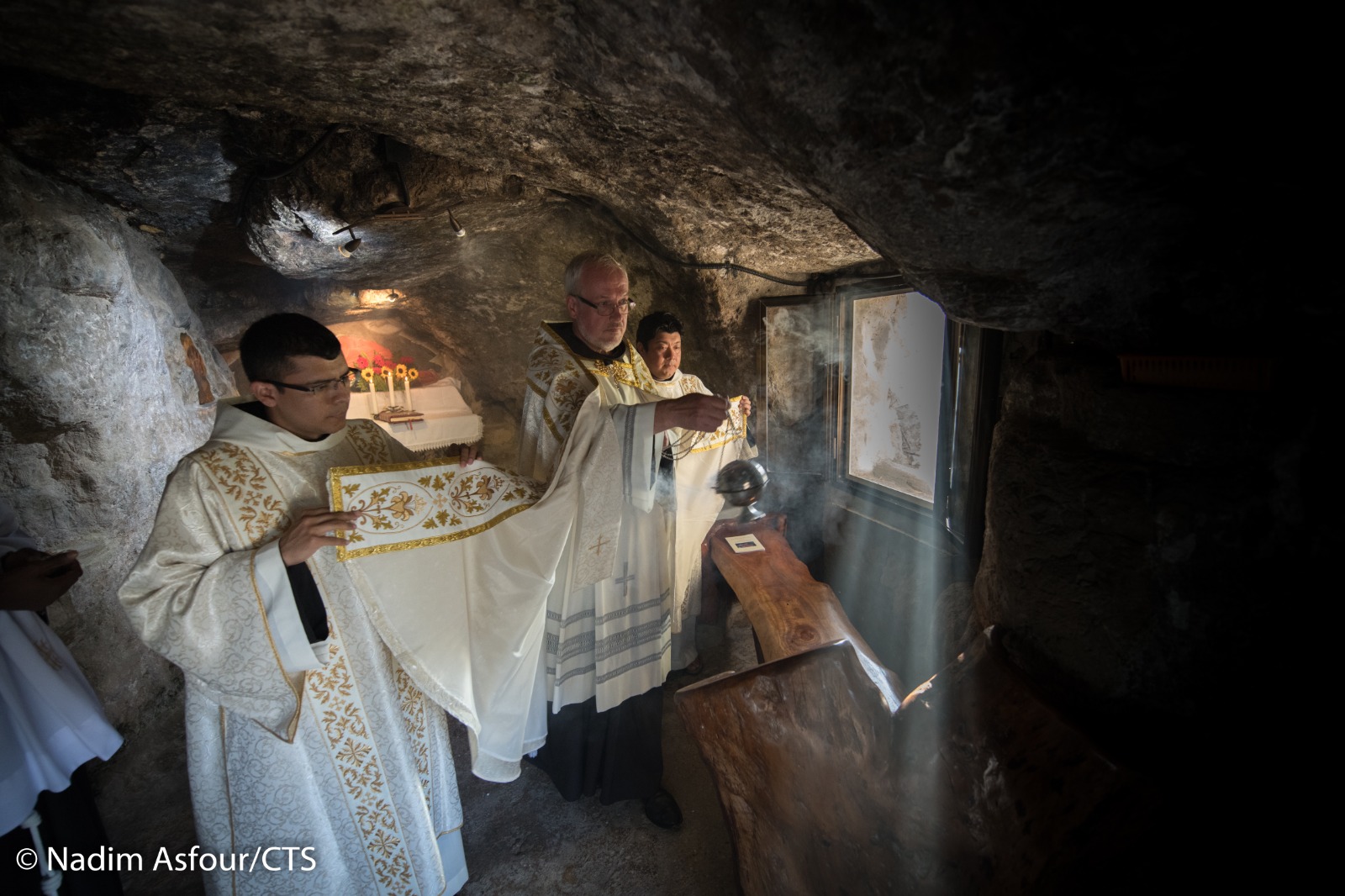

Black
The colour of mourning, we have seen that it was also during in the Middle Ages to mark the times of penitence.
From the Council of Trento, black has been used on Good Friday as well as for the Offices of the Dead. Since Paul VI’s reform, it can be replaced by violet (and has effectively been so in many parishes).
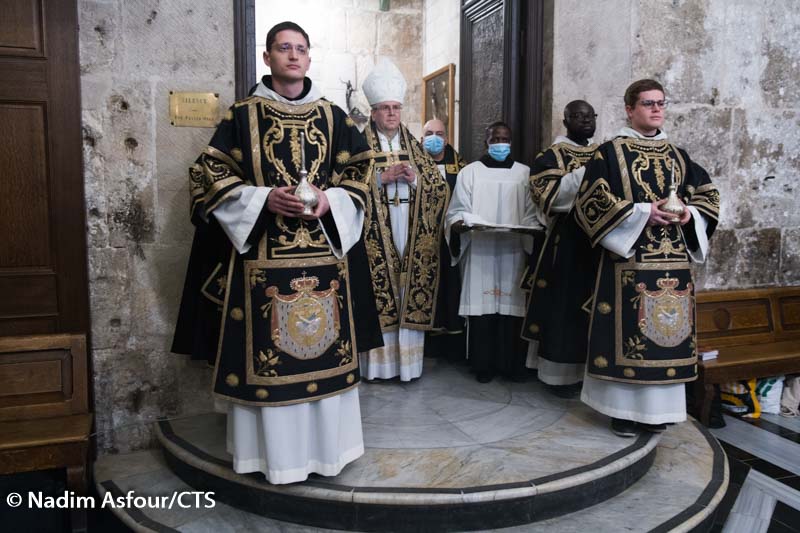
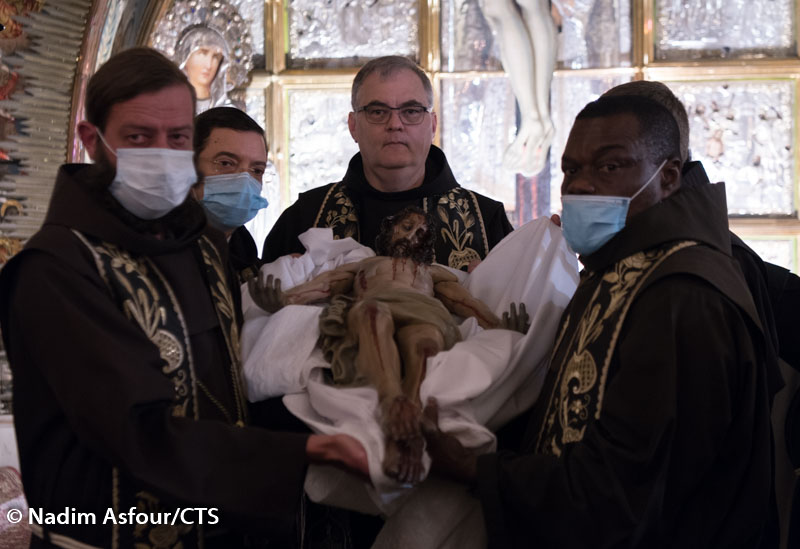
Viola
In the first place perceived as a variation of black, violet has since then been asserted as a liturgical colour in its own right, symbolizing the penitence and the time of preparation for the coming of Christ.
It is thus used during Lent and Advent and can, since Vatican II Council, replace black.
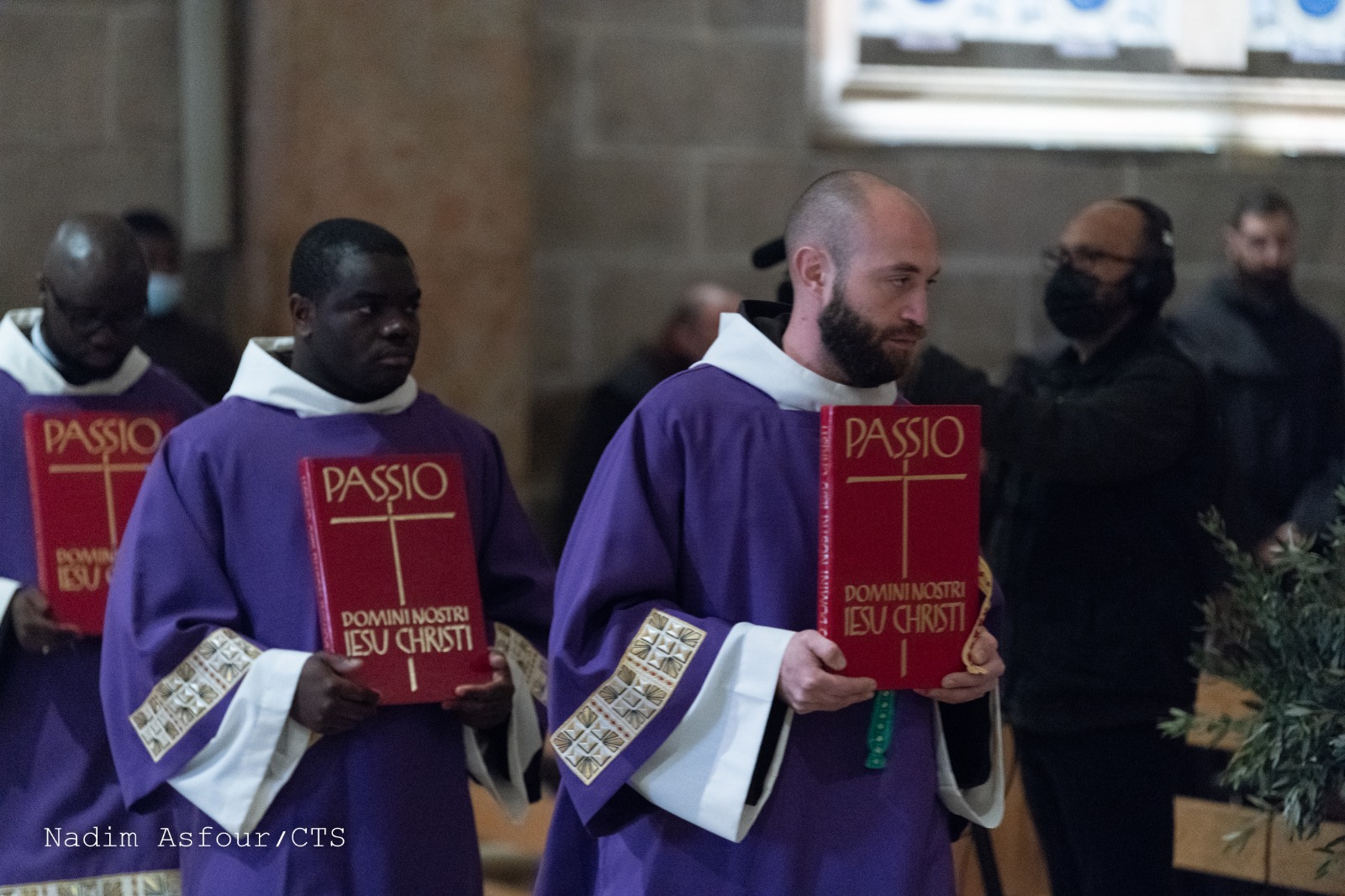
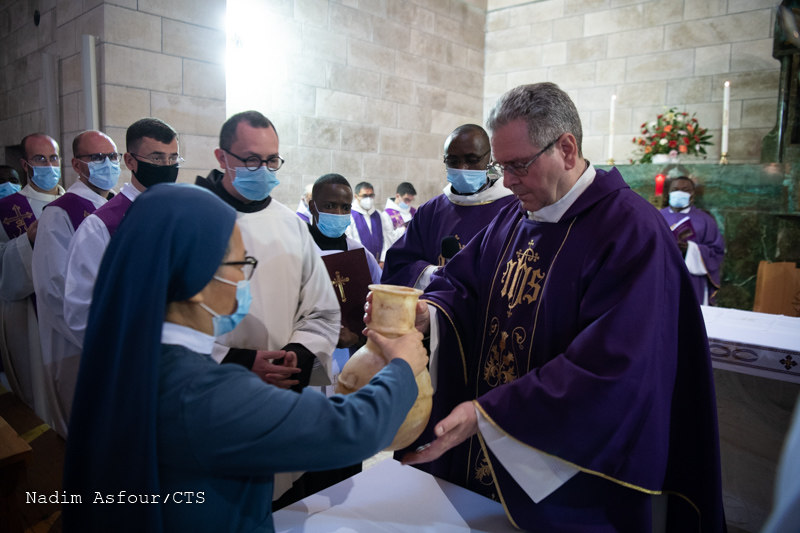
Variations and liturgical privileges :
Pink
Conceived as a variation of violet, pink marks two pauses that the Church takes in the times of penitence. It thus symbolizes violet by becoming lighter, in preparation for the joys to come.
Pink is used twice in the year, on the third Sunday of Advent (Gaudete) and on the fourth Sunday of Lent (Laetare). [7]
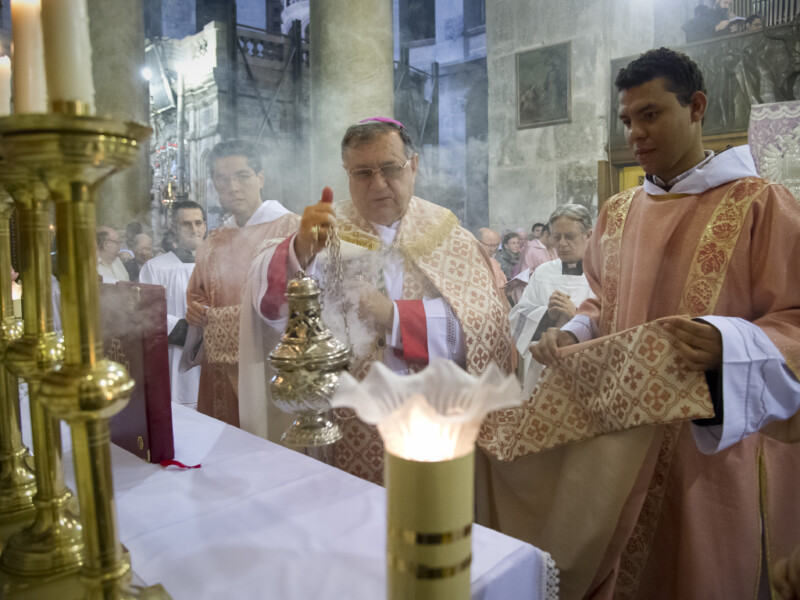
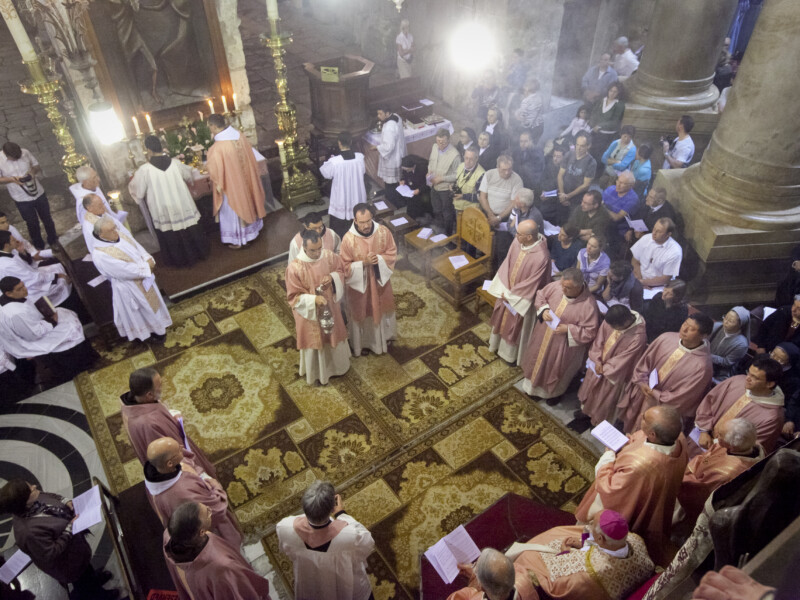
Yellow/Gold
The symbol of divine light, gold or yellow can be used to replace any colour, with the exception of violet and black.


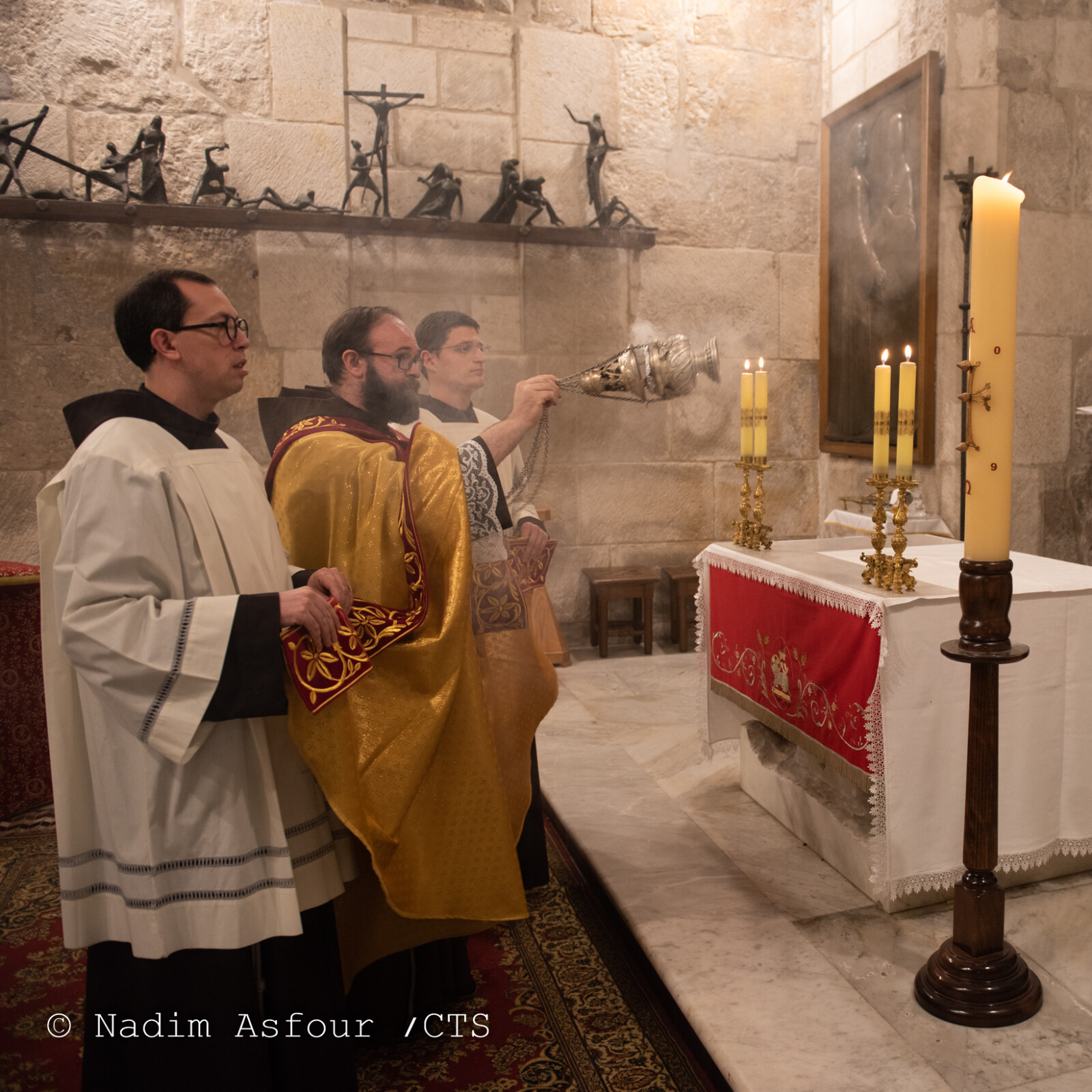
Blue
Blue is associated with the Marian dogma and so cannot be used except for the celebrations related to the Virgin Mary, such as the Assumption or the Immaculate Conception.
The only colour representing a real liturgical privilege, its use has been authorized by the Council or Trento only for Portugal, Spain, the former territories of these two countries, the ancient kingdom of Bavaria, certain churches in Naples as well as the Franciscan order, due to their historic defence of the Marian dogma. This privilege is still valid today.


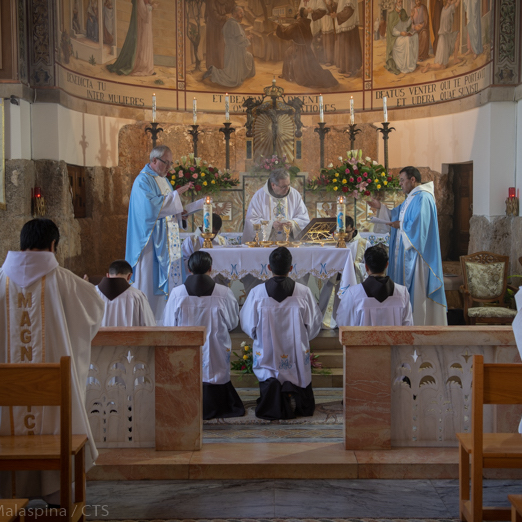
We cannot conclude this brief presentation of the liturgical colours without mentioning two other colours that were used –although rarely – and effectively have disappeared from the liturgy nowadays.
- Brown was envisaged as a variation of violet and therefore as a sin of Penitence, If it is no longer used today, it is nevertheless the colour of the habits of the Franciscan and Carmelite orders.
- Grey (or ash) was proper to France and particularly to the rite of Lyon. It was used in particular on Ash Wednesday.
(translated from french by Joan Rundo)
[1] Gaffiot, Jacques-Charles, « Glossaire », in Trésor du saint sépulcre, Paris, Cerf, 2020, p. 234.
[2] Sector, Charlotte, « Reading the Color of the Vatican », ABC News, 6 janvier 2006, En ligne : https://abcnews.go.com/Health/Pope/story?id=640088&page=1 (consulté le 18/08/21).
[3] Gaffiot, Jacques-Charles, op. cit., p. 234.
[4] Pettinau Vescina, Maria Pia, Paramenti Sacri. Dall’Europa alla Terra Sancta, Milan, ETS, 2019, p. 517.
[5] Unlike De sacro altaris mysterio by Innocent III which only had value as a treatise and therefore a recommendation (all the more as its author was not yet pope), the Ordo Missae by Pius V was given a compulsory nature when it was publicized. It was effectively the outcome of the Council of Trento, and drew its spirit of deep ecclesiastical reform aiming at the unity of the Roman Catholic church and reasserting the primacy of the Pope in the face of the emergence of the Protestant reforms.
[6] Pettinau Vescina, Maria Pia, op. cit., p. 517.
[7] ] The two terms Gaudete and Laetare mean « Rejoice ».



